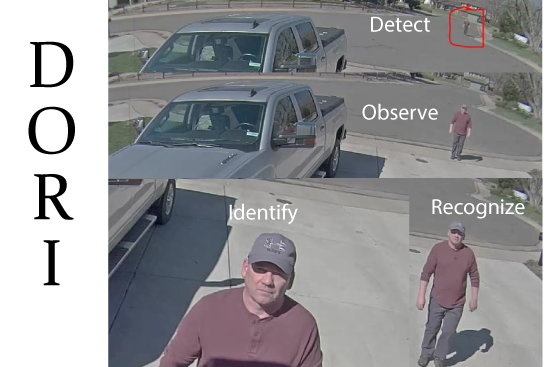Video/Security Camera System Design
This is a general guide to help you determine what you may need for your security camera system.
The first thing you need to determine is what is the purpose of your camera system and what are your expectations. You will need to decide what are the goals of your system and how you can achieve them, often it a balancing act as most cameras are purpose driven. For example, you will not be able to cover the entire front of your home or building with a single camera and capture license plates of every car that passes you home/building.
When selecting a security camera and lens combination, some initial things to consider:
- Type/Size of Object of interest
- Distance to Object of Interest
- Scene Lighting
- Camera Resolution/Imager Size
- Camera Lens Focal Length
- Expected Purpose of Camera
How to define the purpose of your camera: Detect, Observe, Recognize, Identify (DORI)
There are two commonly used standards one defined by US Department of Homeland Security and the DORI standard developed by the British Security Industry Association (BSIA). In Europe the use of video surveillance is much more common than here in the US and we feel better established guidelines. We prefer the DORI standard primarily because it is easier to use, implement and has four levels vs. three used by DHS. Well, it really has six categories. In addition to the DORI four, it also has two additional categories of Monitor and Inspect. Overall the pixel counts are relatively the same, if you can ID someone you can ID them, right?
Detect: (8 pixels per foot) Ability to reliably and easily determine whether any target (person/vehicle) is present.
Observe (19 pixels per foot) Ability to see the characteristic details of an individual, such as distinctive clothing while allowing a view of activity surrounding the incident.
Recognize (38 pixels per foot) Ability to determine with a high degree of certainty whether an individual shown is the same as someone they have seen before.
Identify (76 pixels per foot – approx. 80p/f) The ability to enable identification of an individual beyond a reasonable doubt.

Link to DHS document (Click Here)
Link to DORI BSIA document (Click Here)
As you can see, to identify people across my entire driveway would require four cameras to get that type of detail for my driveway. A better strategy would be to identify small areas or choke points to have enough resolution/pixels to identify people. For example, we could put a camera that covers the front door, a side gate or for interior cameras a camera that cover a doorway.
Here is an example of a camera with the DORI information provided on the datasheet/specification sheet. As you can see this Dahua dual-sensor security camera with 2 x 2MP lenses will be good for Identifying people up to 13-feet away from the camera. This could be a good choice for an office entrance, the front of a building or home where you would anticipate people would come within 13 feet of the camera placement. It would also be a good choice for lobby, work area, or other area that you would like to observe people out to roughly 50-feet.
Lighting Considerations
We need light to see things! While cameras have come a long ways to provide images with very little light, the still do need light. One of most common type of lighting is IR Illumination built into the cameras. Infrared (IR) lighting is invisible to our eyes and camera use this by switching to Black & White mode. This is because the IR lighting is cut-out of our color images. In our above camera example you can see that the maximum IR LED Distance is 66 feet. Here is a video I did that demonstrates the night time image of this same camera at various distances. Feel free to skip around, if you open the video in YouTube, in the details you can click to the different areas of the video. The IR illumination does make our eyes glow and in near zero light I would say the camera is more for the purpose of the Detect, Observe and Recognize purposes. The best light for security camera is daylight or white light, if you can use either a low level white light or a motion light this is the best option. If you do use a motion light, you will want to set it up to trip sooner than later as the sudden light will bloom your camera momentarily. Similar to when we walk from inside to outside on a bright day.
Choosing a style of Camera (Dome or Bullet)
When choosing between a dome or a bullet camera, I like to use a bullet camera when I'm am not worried about someone moving the direction the camera is looking. If I am mounting the camera above roughly ten-feet I prefer a bullet camera. This is primarily due to environmental issues, specifically with a dome camera the sun or other light source can cause some strange and unanticipated reflections into the camera lens. I like to use domes for interior ceilings and where there is a risk of the camera being intentionally moved.
